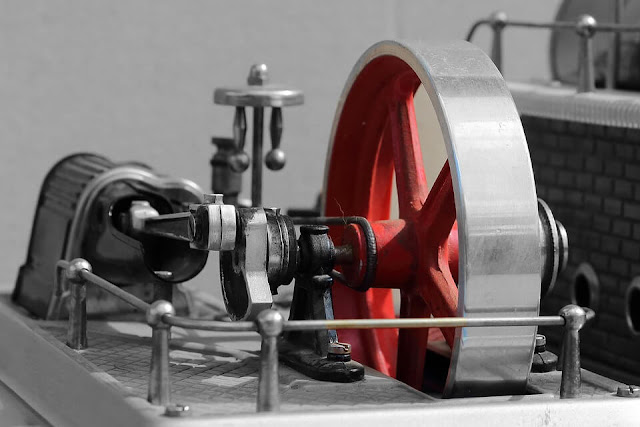What Is A Flywheel? Function, Applications and Equation for Energy Stored
Flywheel or inertia wheel used in a machine act as a temporary reservoir of the energy, which stores energy when the energy supply is more than required for an operation and releases the stored energy when the supply power does not adequate with the needs. In the case of the IC engines, the torque on the crankshaft fluctuates during the one complete cycle of operation that causes a change in angular velocity of the shaft. In order to obtain a uniform torque, an inertia mass is provided at the end of the shaft, known as the flywheel. The energy stored in a flywheel is proportional to the square of the angular speed.
Flywheel in engine
The flywheel is mounted on the one side of a crankshaft of the transmission line, to reduce the imbalance of the rotational force on the crankshaft. In the case of the four-stroke engine, in each cylinder, one power stroke is generated per two revolutions of the crankshaft. The flywheel stores this energy as kinetic energy and provides the same in the other strokes (compression, intake, and exhaust) for a continuous engine run. Therefore, in the absence of a flywheel, the rotation of the crankshaft has become pulsating; and when the interval of the power stroke becomes long as in the idling state, the engine gets stopped.The flywheel assembled on a crankshaft must have been dynamically balanced. Dynamically unbalanced assembly causes vibration of the crankshaft as well as a large load on the crankshaft and bearing.
- The flywheel only reduces the fluctuation of speed. It does not maintain the constant speed.
- The flywheel cannot be used to regulate the speed variation caused by the varying load. To know about speed regulation in varying load Read: What does a governor do?
Functions and application of flywheel
- Stores the significant amount of energy and release it when required.
- Flywheel sometimes used to supply intermittent pulses of energy. Delivering the energy beyond the capability of machine by acquiring energy to a flywheel over time, then release it quickly e.g.: Riveting machines
- Reduce the fluctuation of torque, make crankshaft rotation uniform.
- Flywheel enables to continue the mechanism through the dead center.
- It provides a balance for the crankshaft of the engine.
- Flywheels facilitate overcoming the short time overload, for example, the starting of an engine from the rest.
Equation of energy stored in a flywheel
The kinetic energy stored in a flywheel depends on the angular velocity and moment of inertia of mass. The relation is given belowω = angular velocity
I = the moment of inertia of the mass about the center of rotation.
For solid cylinder

For a thin-walled empty cylinder

For a thick-walled empty cylinder

m = mass of flywheel
r = radius



